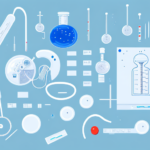Comprehensive Guide to Safe and Reliable Blood Sample Transport
As a crucial component of modern medicine, blood samples are essential for diagnosing and treating a wide range of illnesses and conditions. However, transporting these samples can jeopardize their integrity and effectiveness. This guide explores the importance of proper blood sample transport and the key factors to consider to ensure safe and reliable delivery.
The Importance of Proper Blood Sample Transport
Ensuring the proper transport of blood samples is vital for maintaining the accuracy and reliability of diagnostic tests and treatments. Mishandling samples during transit can lead to contamination, degradation, or loss, resulting in incorrect diagnoses or delayed treatments that may compromise patient health.
Accuracy and Reliability in Diagnostics
Accurate diagnostic results depend heavily on the integrity of blood samples. Studies have shown that improper handling can alter the composition of blood, leading to misleading test outcomes (FDA Guidelines).
Temperature Control
Maintaining the correct temperature is essential to prevent the degradation or spoilage of blood samples. Exposure to extreme temperatures can render samples unusable for testing. Utilizing temperature-controlled packaging and transportation methods is critical for preserving sample integrity.
Proper Labeling and Documentation
Clear labeling with patient information, collection dates, and other relevant data ensures that samples are correctly identified and tracked throughout the transport process. Proper documentation aids in maintaining a reliable chain of custody, essential for both quality control and regulatory compliance.
Factors Affecting Blood Sample Safety During Transport
Several factors can influence the safety and integrity of blood samples during transport. Understanding these factors is key to developing effective transportation strategies.
Environmental Conditions
- Temperature: Fluctuations can cause sample degradation.
- Humidity: Excessive moisture can lead to contamination.
- Pressure Changes: Altitude variations during air transport can affect sample containers.
Physical Handling
Improper handling can result in physical damage to samples. Shock-resistant packaging is necessary to protect samples from impacts and vibrations during transit.
Contamination Risks
Using sterile containers and following strict handling protocols reduces the risk of sample contamination, ensuring the reliability of test results.
Types of Blood Samples and Their Transport Requirements
Different types of blood samples have unique transportation needs to maintain their viability and usability in diagnostic processes.
Whole Blood
Collected directly from a vein, whole blood contains all blood components, including red and white blood cells and platelets. It requires refrigeration to prevent cellular degradation.
Serum and Plasma
Serum is the liquid portion of blood after clotting, while plasma is obtained by separating the liquid before clotting. Both require refrigeration or freezing, depending on the analysis requirements.
Peripheral Blood Mononuclear Cells (PBMCs)
Used primarily in research, PBMCs are sensitive to temperature changes and require specialized cryogenic transport solutions to preserve their viability.
Best Practices for Preparing and Packaging Blood Samples
Proper preparation and packaging are critical steps in ensuring the safe transport of blood samples.
Sample Collection and Handling
- Use sterile containers to prevent contamination.
- Handle samples with care to avoid mechanical damage.
- Immediately refrigerate or freeze samples as required.
Secure Packaging Solutions
Utilize leak-proof containers and cushioning materials to protect samples during transit. Temperature-controlled packaging, such as insulated boxes with gel packs, is essential for maintaining required temperature ranges.
Regulatory Compliance
Adhere to all relevant regulations and guidelines, including those set by the Federal Aviation Administration (FAA) and the International Air Transport Association (IATA), to ensure legal and safe transport of blood samples.
Choosing the Right Transport Equipment
Selecting appropriate transport equipment is crucial for safeguarding blood samples during transit.
Temperature-Controlled Containers
Use containers that can maintain specific temperature ranges, such as refrigerated boxes for samples that need to stay cool or insulated containers for samples requiring freezing.
Shock-Resistant Packaging
Employ packaging materials that absorb shocks and vibrations to protect samples from physical damage during transportation.
Compatibility with Sample Types
Ensure that the transport equipment is suitable for the specific type of blood sample being transported, considering factors like temperature sensitivity and exposure to light.
Technological Advancements in Blood Sample Transport
Modern technology plays a significant role in enhancing the safety and reliability of blood sample transport.
Real-Time Tracking and Monitoring
Implementing GPS tracking systems and temperature sensors allows for real-time monitoring of sample conditions, ensuring immediate response to any deviations (World Health Organization).
Smart Packaging Solutions
Advanced packaging technologies, such as blockchain for secure tracking and smart sensors for condition monitoring, provide enhanced security and data integrity throughout the transport process.
Future Innovations
Emerging trends include automated handling systems and integrated smart transport solutions that optimize routes and reduce the risk of human error, further improving transport efficiency and safety.
Common Mistakes to Avoid During Blood Sample Transport
Avoiding common pitfalls can significantly improve the reliability of blood sample transport.
- Incorrect Packaging: Using inadequate or non-sterile containers can compromise sample integrity.
- Improper Labeling: Failure to accurately label samples can lead to mix-ups and delays.
- Lack of Temperature Control: Not maintaining proper temperatures can result in sample degradation.
- Non-Compliance with Regulations: Ignoring transport regulations can lead to legal issues and sample rejection.
Regulations and Standards for Blood Sample Transport
Compliance with established regulations and standards is essential for the safe and legal transport of blood samples.
Regulatory Bodies
Adhere to guidelines from organizations such as the U.S. Food and Drug Administration (FDA) and the European Centre for Disease Prevention and Control (ECDC) to ensure compliance with national and international standards.
Industry Standards
Follow protocols set by the International Air Transport Association (IATA) for the transportation of biological samples, including proper labeling, packaging, and documentation.
Conclusion
Ensuring the safe and reliable transport of blood samples is paramount for accurate medical diagnostics and effective treatment. By understanding the critical factors affecting sample integrity, adhering to best practices in preparation and packaging, selecting appropriate transport equipment, leveraging technological advancements, and complying with regulatory standards, medical professionals can maintain the quality and reliability of blood samples throughout the transportation process. Implementing these strategies not only enhances patient care but also contributes to the overall efficiency of the healthcare system.






















